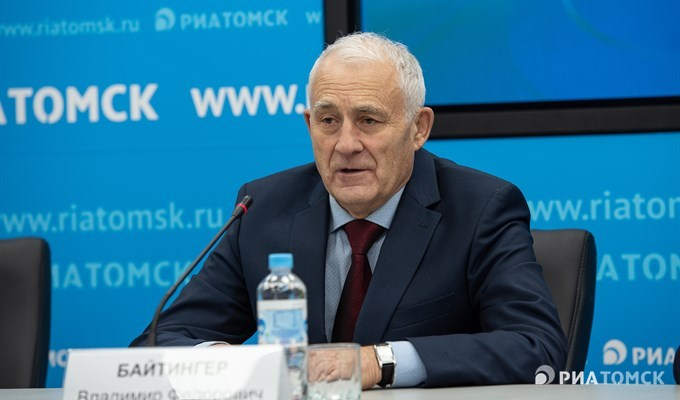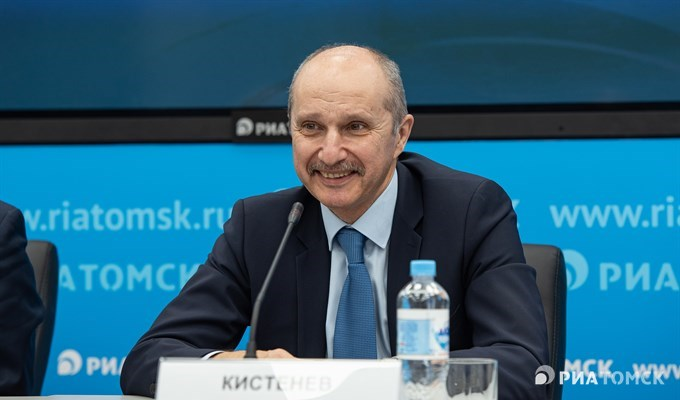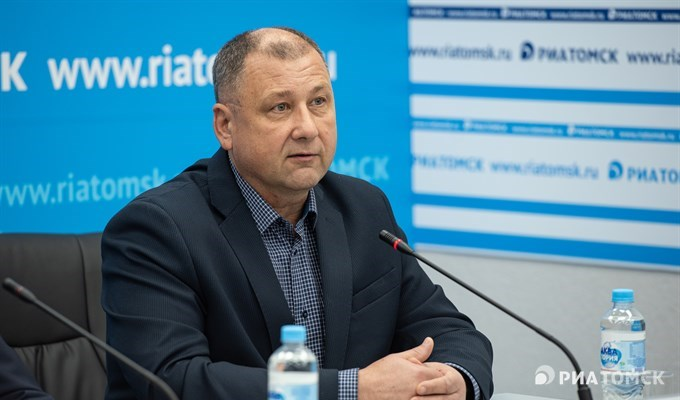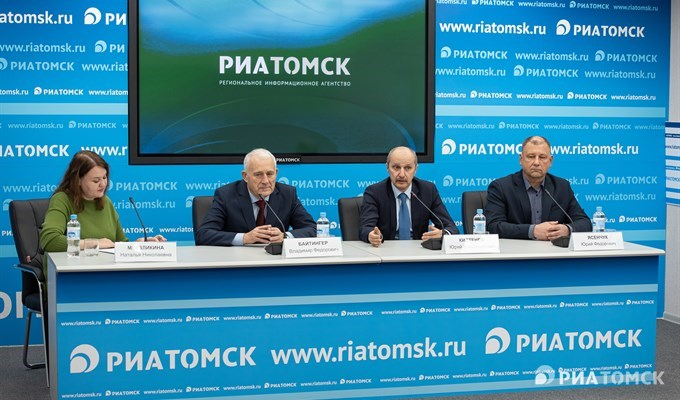
“The second Siberian microsurgical summit opened on Thursday at Tomsk State University (TSU). The program includes master classes on ultrasound of peripheral nerves, microsurgical sutures, and on arthroscopy of the joint,” announced Vladimir Baitinger, director of Tomsk Research Institute of Microsurgery (TSU as a founder).
Consolidated Forces
The second microsurgical summit opened at the TSU Scientific Library on Thursday morning.
“Highly interesting master classes are held in the summit: training in microsurgery performed together with scientists from Columbia University, New York. I really appreciate training at Tomsk Information Center on Atomic Energy, where we were given the opportunity to work with ultramodern ultrasound equipment delivered from Krasnoyarsk”, Baitinger says.
According to Baitinger, a surgical operation was showcased as part of the summit master classes. The operation was performed by Igor Golubev, the chief hand surgeon of Russia, head of the Department of Hand Surgery and Microsurgery of the Center of Traumatology and Orthopedics named after N.N. Priorov (Moscow). Live surgicalbroadcast was available for surgeons from all over the world.

The director of the Research Institute of Microsurgery said that Tomsk hosts the microsurgical summit because of “favorable conditions: the only institute of microsurgery in Russia, the support by the regional administration, the support by Eduard Galazhinsky, TSU rector, and the patronage of the world society for reconstructive microsurgery. Nothing could be done without these consolidated forces.”
One of the topics of the summit was the methods for surgical correction of lymphedema (impaired transport of lymph through the lymphatic vessels, 70% of women after removal of the breast due to breast cancer are at a risk of lymphedema).
Reports on this topic were presented by Isao Koshima, professor of medicine, the Faculty of the University of Tokyo, and by specialists from the V.A. Almazov National Medical Research Center (St. Petersburg), Tomsk Oncological Dispensary, Tomsk Research Institute of Microsurgery, and other Russian organizations.
Collaboration between doctors and scientists
Yury Kistenev, head of the Biophotonics Laboratory, executive director of the TSU Institute of Biomedicine, said that the university has a long-term cooperation with the Research Institute of Microsurgery.

“Traditional surgery and microsurgery areas are also developing at TSU. Our laboratory combines biophotonics methods, machine learning for fast non-invasive diagnostics. This year we’ve launched a project on rapid non-invasive diagnostics of respiratory and bacterial infections,” Kistenev says.
According to Kistenev, about a year ago, TSU scientists, together with doctors from the Research Institute of Microsurgery, realized a joint project aimed to help patients with lymphedema. Despite the fact that the disease is common, most people suffering from lymphedema do not know how to deal with the disease.
“Our methods combined and the experience of scientists from the Siberian State Medical University were used to create the model for diagnostics, the results were published in the first quartile journal and recognized as the best article in the issue,” the director of the Institute of Biomedicine says.
He clarified that the collaboration resulted in the creation of the model for diagnosing lymphedema using modern microscopy and machine learning methods adapted by scientists for this task.
“This is a state-of-the-art informative method for studying tissues at the subcellular level. However, these are algorithms based on machine learning. When we developed such methods, we used research equipment that cannot be applied in a clinic, and the next step should be aimed at creating hardware,” the scientist says.
If the project is implemented, patients will have the opportunity for early diagnosis of this disease to enable timely treatment.
Development of implants
Yury Yasenchuk, senior researcher at the Research Institute of Medical Materials and Shape Memory Implants, TSU, explained that the work of TSU scientists contributes to the development of medical materials science that helps surgeons in their work. Scientists from the Institute have been developing various materials made from titanium nickelide (a unique material with shape memory and superelasticity) for about 30 years.
“When an implant is implanted into the body, it comes into contact with living tissues, and for their successful coexistence and functioning, the load should be within physiological limits, that is, neither less nor more, otherwise it can eventually lead to rejection, inflammatory processes and others,” Yasenchuk says.
Therefore, objective criteria are needed to evaluate the interaction between the implant and biological tissues on the surface. Based on the study of the properties of materials, this development will help determine which material is most appropriate for a particular case.

“The problem of obtaining objective recommendations has not been solved anywhere in the world. Everything is trial and error. We tried a different approach: we tested biological tissues and implanted material for tension. For this, we developed a special device, compact and portable, to simplify this process,” the representative of the Institute says.
He added that the team involved mathematicians who developed “a numerical model of the behavior of an abstract viscoelastic medium” to compare the deformation behavior of biological tissues and implants.
“In fact, the method for determining mechanical compatibility will be similar to working in Photoshop. There is a certain curve to display all the properties of the image, for example, and you change the shape of this curve to adjust it to what you need. We employ a similar principle. We can combine this abstract model with the deformation behavior of biological tissue,” Yasenchuk says.
He also explained that this work has been supported by an international grant and involves scientists from Germany, South Korea and the United States.

Author: Taisiya Voronzova.
Source: RIA Tomsk.

